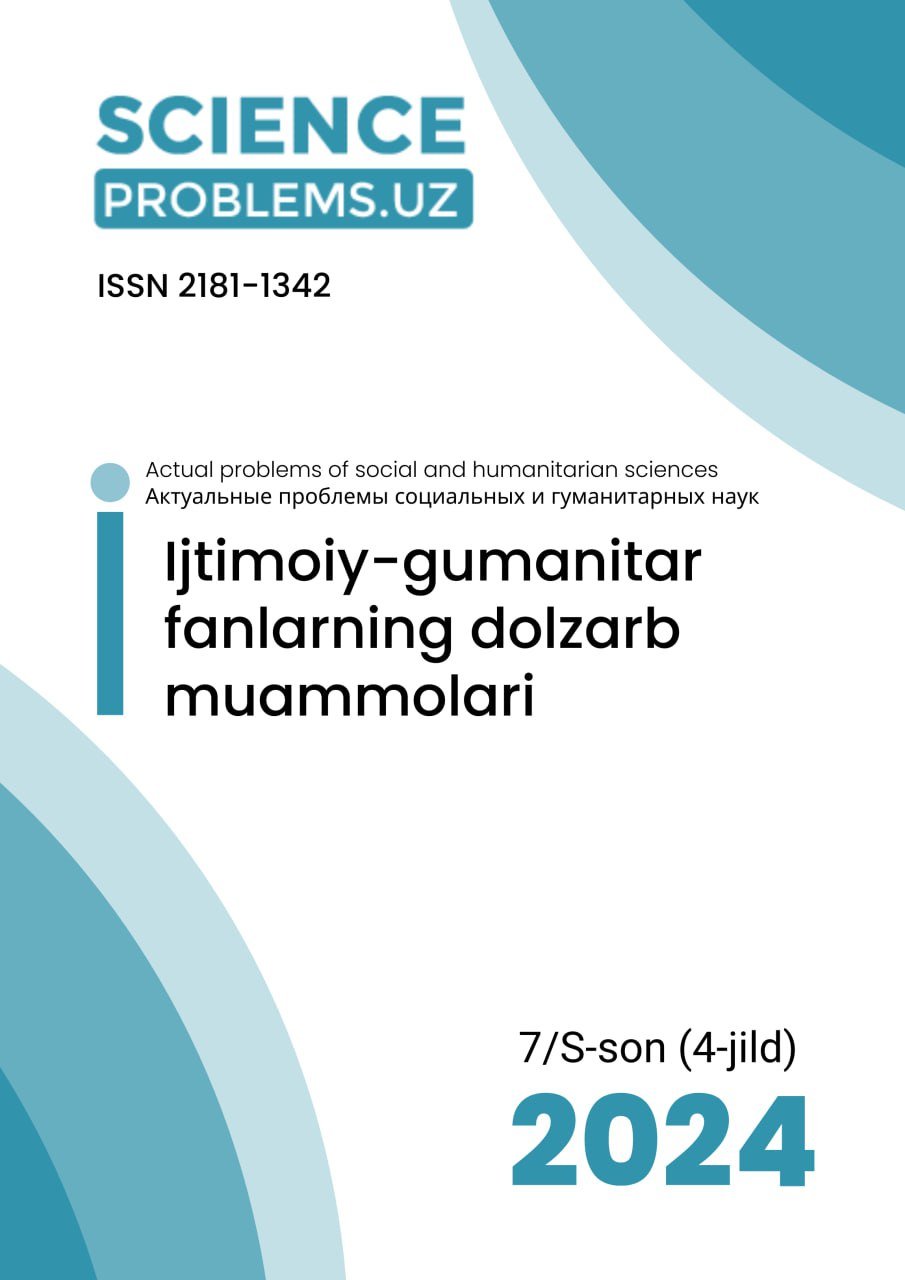SKALPELDAN DOSKAGACHA: TIBBIY TA’LIM PEDAGOGIK YONDASHUVLARNI QANDAY INQILOB QILMOQDA
Kalit so'zlar
https://doi.org/10.47390/SPR1342V4SI7Y2024N33Kalit so'zlar
Tibbiy ta’lim, pedagogik innovatsiyalar, simulyatsiyaga asoslangan, o‘rganish, raqamli ta’lim platformalari, muammoli ta’lim (PBL), Kasblararo ta’lim (IPE), faol ta’lim, klinik ta’lim, ta’lim texnologiyalari, o‘qitish metodikasi.Annotasiya
Ushbu maqolada tibbiy ta’limning an’anaviy, amaliy mashg‘ulotlardan innovatsion pedagogik usullarga o‘tishidagi o‘zgarishlar o‘rganiladi. Tadqiqotilg‘or texnologiyalar, fanlararo hamkorlik va bemorlarga yo‘naltirilgan parvarishning zamonaviy tibbiy tayyorgarlikka ta’sirini ta’kidlaydi. Adabiyotlarni o‘rganish, so‘rovlar, intervyular, fokus-guruhlar va amaliy tadqiqotlarni o‘z ichiga olgan aralash usulli yondashuv orqali tadqiqot simulyatsiyaga asoslangan ta’lim, raqamli platformalar, muammoli ta’lim (PBL) va kasblararo ta’limni qabul qilish va samaradorligini o‘rganadi (IPE). Asosiy topilmalar ushbu usullarning keng qo‘llanilishini, takomillashtirilgan klinik ko‘nikmalarni va talabalarni jalb qilishni, shuningdek, resurslarning cheklanishi va o‘zgarishlarga qarshilik kabi muhim muammolarni ochib beradi. Tadqiqot ushbu yangiliklarning uzoq muddatli ta’siri bo‘yicha qo‘shimcha tadqiqotlarni talab qiladi va amalga oshirish to‘siqlarini yengib o‘tish uchun strategik rejalashtirish hamda qo‘llab-quvvatlash zarurligini ta’kidlaydi.
Manbalar
1. Prince, M. (2004). Does active learning work? A review of the research. Journal of Engineering Education, 93(3), 223-231. Freeman, S., Eddy, S. L., McDonough, M., Smith, M. K., Okoroafor, N., Jordt, H., & Wenderoth, M. P. (2014). Active learning increases student performance in science, engineering, and mathematics. Proceedings of the National Academy of Sciences, 111(23), 8410-8415.
2. Kolb, D. A. (1984). Experiential learning: Experience as the source of learning and development. Prentice-Hall.
3. Gulfura Tashmetova. (2022). TIBBIYOT TALABALARINING MULOQOT KO‘NIKMALARINI MEDIATEXNOLOGIYALAR ASOSIDA SHAKLLANTIRISH VA RIVOJLANTIRISH. Proceedings of Scientific Conference on Multidisciplinary Studies, 1(3), 96–98. Retrieved from https://econferenceseries.com/index.php/scms/article/view/554
4. Smith, G., & Cardaciotto, L. (2011). Is active learning like broccoli? Student perceptions of active learning in large lecture classes. Journal of the Scholarship of Teaching and Learning, 11(1), 53-61.
5. Akramova Z., Baxtiyorova Sh. Tibbiy matnlarni tarjima qilish // Academic research in educational sciences. –T.: TMA Conference, 2023.–B. 596-603.URL: https://cyberleninka.ru/article/n/tibbiy-matnlarni-tarjima-qilish/viewer3. Aсилова Г.А.
6. Reeves, S., Fletcher, S., Barr, H., Birch, I., Boet, S., Davies, N., ... & Kitto, S. (2016). A BEME systematic review of the effects of interprofessional education: BEME Guide No. 39. Medical Teacher, 38(7), 656-668.
7. Thistlethwaite, J. E. (2012). Interprofessional education: A review of context, learning and the research agenda. Medical Education, 46(1), 58-70.
8. Barr, H., Koppel, I., Reeves, S., Hammick, M., & Freeth, D. (2005). Effective interprofessional education: Argument, assumption, and evidence. John Wiley & Sons.
9. Dildora Baxtiyarovna, S. ., & Surayyo, M. . (2022). TIBBIYOTDA KASBIY PEDAGOGIK BILIMLARINING O’RNI. Scientific Impulse, 1(3), 402–405. Retrieved from http://nauchniyimpuls.ru/index.php/ni/article/view/982
10. Kodirova, S., Mustaeva, G., & Mustaeva , . G. (2024). KLINIK MAShG‘ULOTLARDA INNVATSION TEXNOLOGIYANING O‘RNI VA AHAMIYATI. Бюллетень педагогов нового Узбекистана, 2(5), 73–76. извлечено от https://in-academy.uz/index.php/yopa/article/view/32742








